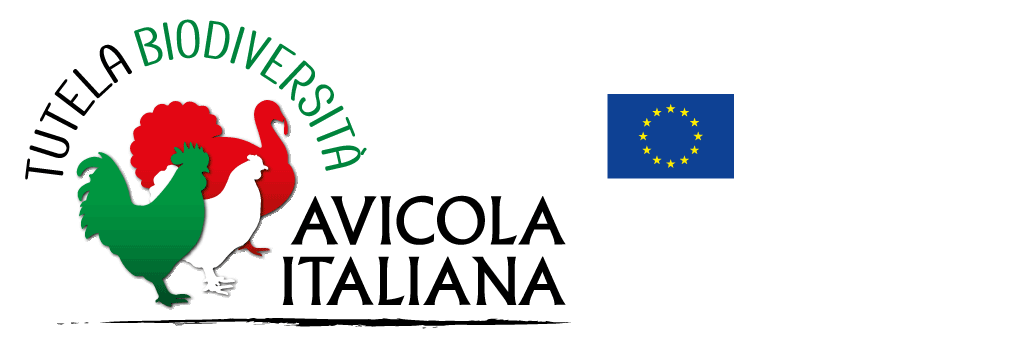Ancona
Geographic origin: Central Italy
Geographic distribution: Marche, Lazio, and Umbria
Estimated total population size: 379 (Castillo et al., 2021)
Extinction risk status (FAO, 1998): Threatened conserved
Any other information specific to the breed: Light breed
Historical origin of the breed
Ancona breed originated in central Italy.
Imported to England from Ancona around 1848, it underwent a careful selection especially to obtain a colouring with regular spotting. In fact, the native Ancona had the coat with many irregularly arranged white feathers. It was in 1880 that the breeder Mr. M. Cobb managed to obtain what he wanted and presented a group of Ancona at an exhibition. The Ancona with rose comb was presented in 1910, at an exhibition in Birmingham. In the Standards of some countries there are also varieties with pink compound comb.
Source
The Manual “STANDARD ITALIANO delle RAZZE AVICOLE” (ITALIAN STANDARD of POULTRY BREEDS)
Qualitative morphological traits
Feather morphology: Normal
Feather distribution: Normal
Plumage structure: Abundant, quite soft and well adherent, with large and rounded feathers with a stiff shaft
Plumage colour: Black mottled, Blue mottled
Colour features: Bicolour, without sexual dimorphism
Colour pattern:
Black mottled: in the male and in the female the plumage is bright black with metallic green sheen. The pattern is formed by V-shaped white pearls at the tip of some feathers, distributed as regularly as possible and not too big. Approximately, the proportion of the pearls on the plumage is one feather every three. In the male, the proportion is one every five on the back, and one every two in neck and saddle hackles, where the spot is smaller. Main tail, sickles, and flight feathers must all have the white tip. The black ground must always prevail, white must be pure and as clearly as possible separated from the black. Shafts follow the color of the drawing. Tipping is regularly aligned at the wing bands and at the end of the secondaries. Down is dark slate.
Blue mottled: in the male and in the female, the ground colour is light grey/blue. The ground colour must be as even as possible and predominant. Darker cape and saddle are tolerated in both the male and the female. Down is grey. The tipping pattern is the same as in the Black mottled.
Chick plumage colour: Yellow and black
Comb type:
Simple comb: in the male, red, well-developed and upright. The well-formed blade follows the line of the head, without getting too close to the nape. In the female, the comb falls gracefully to one side after the second spike.
Rose comb: red, rather small, finely pearled; wider at the front, it narrows towards the back; medium-length conical rear spike, approximately horizontal.
Comb spikes:
Simple comb: Five regularly formed spikes, wide at the base, with quite deep serrations. Except for the first, the spikes are of equal height and width, forming a regular curve.
Ear-lobe colour: Ivory to cream white, oval, middle-sized, smooth, and well adherent to the face.
Beak colour: Yellow with black streaks on the top, strong and slightly arched.
Iris colour: Orange to red
Skin colour: Yellow
Shank colour: Yellow with slate to black speckles
Shank feathering: Free from feathers
Quantitative morphological traits

Reproductive and productive quantitative traits
Oviposition, brooding and incubation data
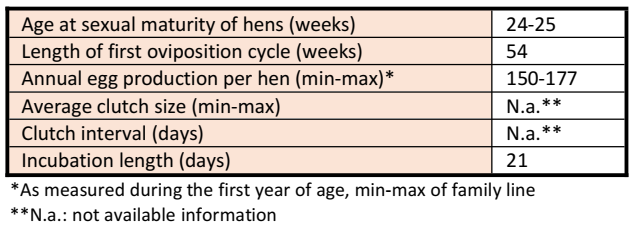
Egg-quality traits

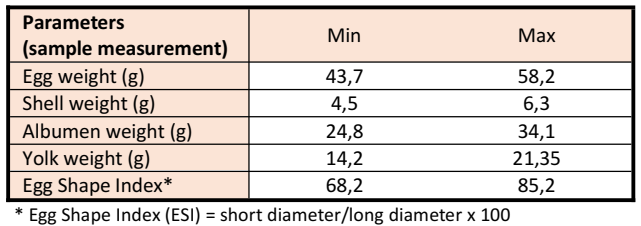
Reproductive traits
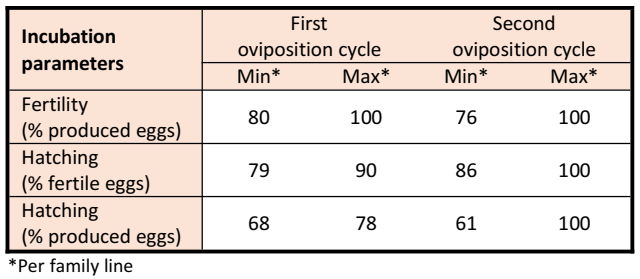
Body weight and growth data
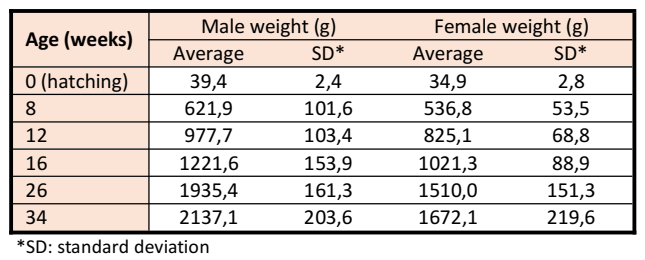
Mortality

Slaughter data (age: 140 days)

Rearing traits
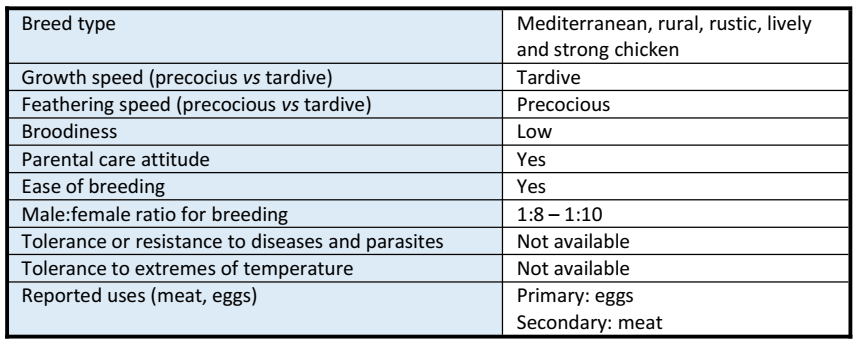
The presented data were registered in nucleus populations conserved at the University of Perugia (UniPG) and at the University of Pisa (UniPI).
Latest update: January 24th, 2023
Germplasm collection
The breed is conserved in our Cryobank with 13 semen doses from 8 donors.
